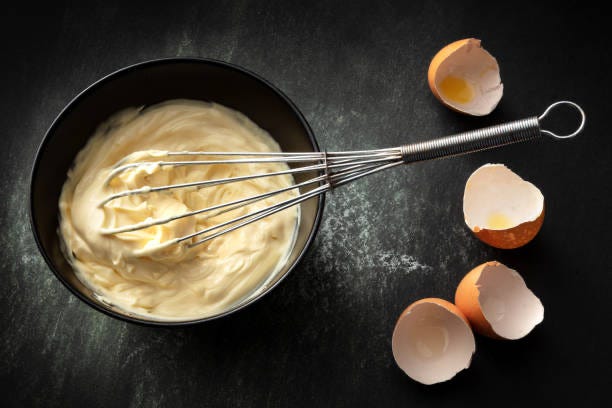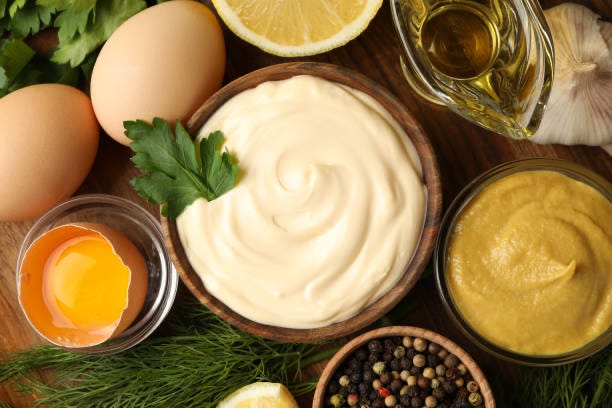Homemade Mayonnaise & Eudora Welty - No. 124
How to make the triumphant sauce of summer & also recipes for pimento cheese, vegan mayonnaise, and a yummy chocolate mayo cake.
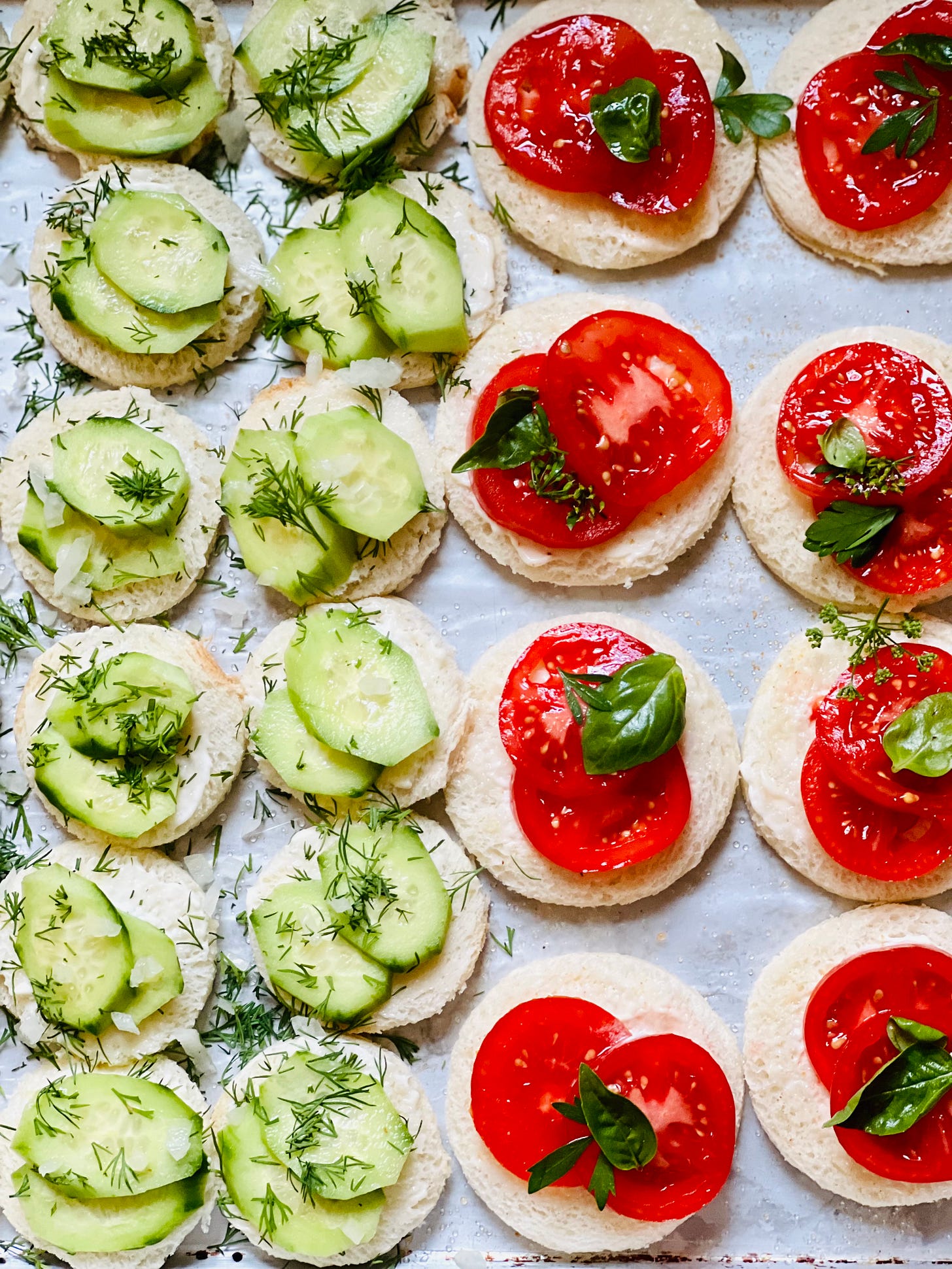
WHEN I WAS TESTING GRILLED CHEESE SANDWICHES for my book Skillet Love, I was determined to come up with the perfect recipe. So I brushed some bread slices with melted butter, drizzled others with olive oil, and even spread a few with mayonnaise before griddling.
And the best sandwich, hands-down, one that was crispy and evenly browned and irresistible, was spread with mayo, which I know sounds odd if you haven’t tried it.
Mayo is one of those sneaky foods that’s in so many recipes and we just don’t realize it. Like cornbread and chocolate cake. Southern writer Rick Bragg once wrote in Gourmet magazine about the mystique of his momma’s mashed potatoes and how he “wondered where the magic came from. It being my mother’s mashed potato recipe, I just assumed it was love…
“Then, lurking just outside her kitchen one Thanksgiving, I saw. It was not some magic turnip, or some deep woods spell. It was just a damn condiment.
“After mashing, salting, peppering and adding whole milk and what seemed a half pound of butter, she opened the refrigerator and reached for a quart jar of mayonnaise.”
If you’re a free reader and love my recipes, consider subscribing for a year for just $50 (about 30 cents a recipe). Think of it as a weekly cookbook! Today I share a chocolate mayo cake, my favorite pimento cheese, and a vegan mayo for paid folks in addition to how to make homemade mayo. Thank you for your support!
Making homemade mayo that’s cheaper and better than the jar & what that has to do with Eudora Welty
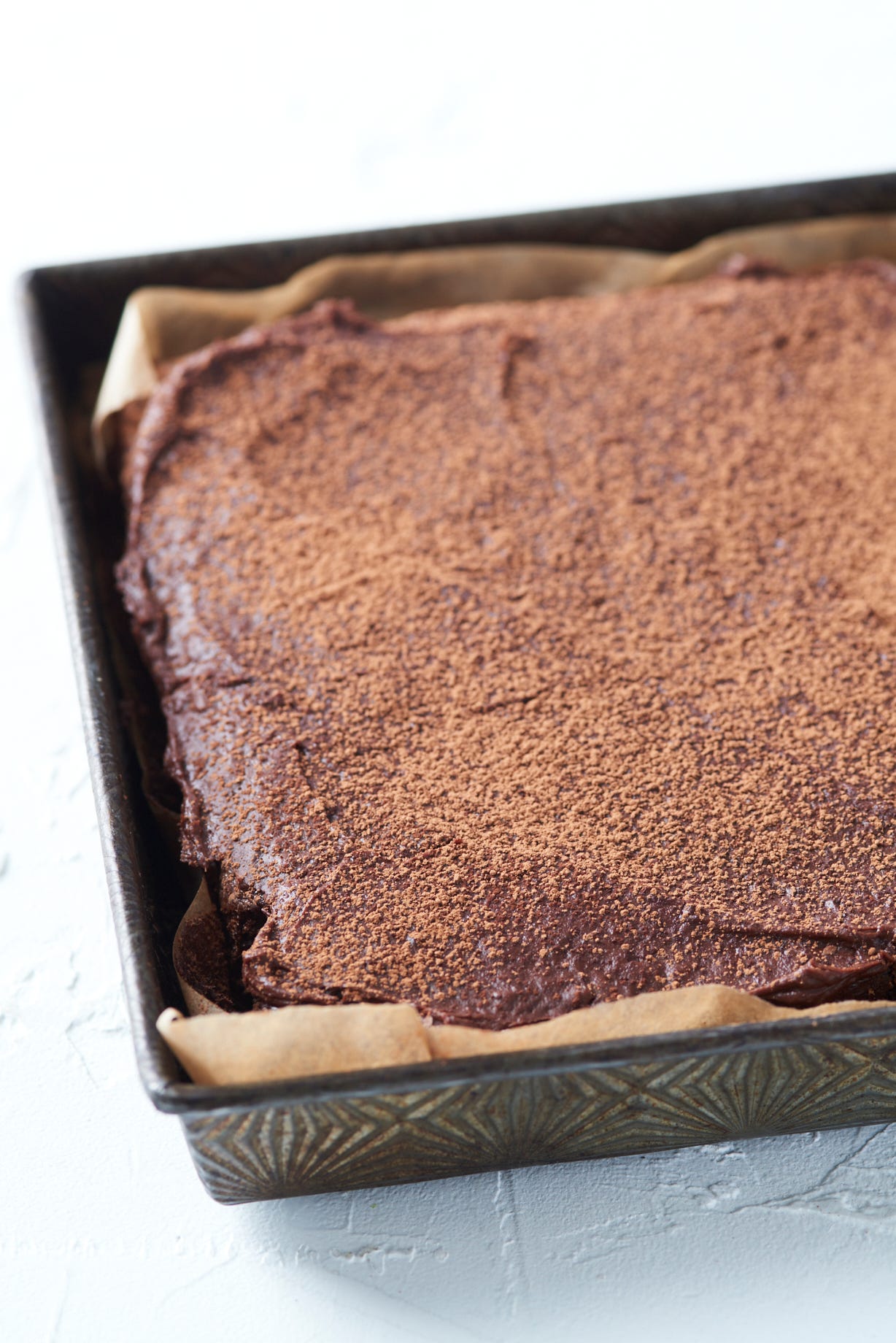
While mayonnaise seems non-confrontational to me, you either love it or hate it.
In truth, I am more of a mustard than a mayo person, but in the summer, I do appreciate good mayonnaise. Homemade, Hellman’s, Duke’s. We spread it onto tomato sandwiches, fold it into potato salad and cole slaw. This, my friends, is high mayo season right now.
And just so you know, mayonnaise is a classic French emulsified sauce, which means it’s made with eggs that allow the oil and liquid (lemon juice or vinegar) to stay blended together—emulsify.
Whether mayonnaise is originally French or Spanish doesn’t concern me. Both are the sources for some of my favorite foods. And you’ve got to credit the Belgians’ genius dip of French fries in mayonnaise. The story goes that mayonnaise was named for the Spanish city of Mahon on the island of Menorca, where it was first made with olive oil. But the French will say the chef of the Duke de Richelieu created the sauce while the French were at war with the British in the Port of Mahon in 1756.
I didn’t grow up on homemade mayonnaise, but I know my grandmothers made it because I remember my parents talking about it at the dinner table as they forked into salads of avocado and pink grapefruit, with a dab of Kraft mayonnaise on top. And my husband remembers his grandmother making homemade mayonnaise to spoon atop anything—fish, casseroles, and vegetables.
In fact, the first homemade mayo I made was at La Varenne cooking school in Paris. That was very much the old school way of making mayonnaise. Beginning with an egg yolk and a little salt and pepper, then whisking in a little lemon juice or vinegar, until thick, and adding the oil drop by drop, whisking constantly. If you whisk patiently and slowly dribble, the mayonnaise will thicken by the time you’ve added only 2 tablespoons of oil. And then you can add the oil a bit more quickly, a tablespoon at a time, and at the end season to taste with a little more lemon juice or vinegar, mustard, salt, and pepper. Dash of cayenne, too! But if you don’t whisk dribble by dribble in the beginning, it will separate.
And thus, the reason I’m sharing a food processor method of making mayo today. There is a small hole in the pusher attachment to your processor. You can pour in the oil and it will dribble into the machine….miraculous!
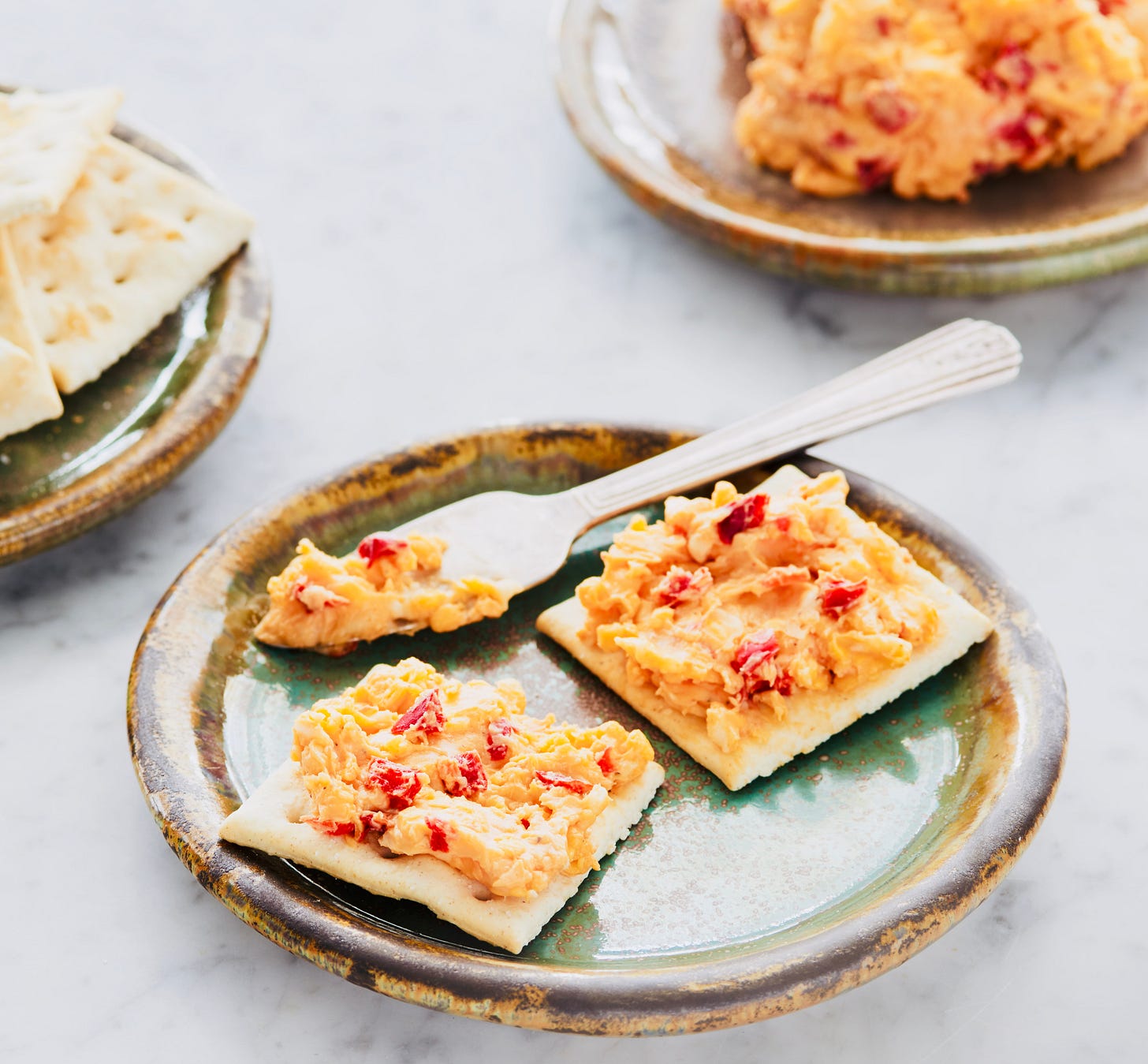
Mayonnaise, made the homemade way, should be eaten fresh. The French do not like mayonnaise refrigerated although surely homemade mayonnaise with its raw eggs left out is a terribly dangerous thing to do for a potluck or party. Keep it refrigerated.
Today we make homemade mayonnaise with food processors and immersion blenders, but the old-school, original way was with a whisk and a bowl. That’s the way Eudora Welty learned to make it on a stool in her mother’s Mississippi kitchen.

“Of course you couldn't buy mayonnaise, and if you could, you wouldn't.” - Eudora Welty
“For the generation bringing my generation up, everything made in the kitchen started from scratch, too. There was a barrel of flour standing in the kitchen!…There’d be seasonal rounds of the blackberry lady, appearing with her buckets at your door,” she writes in the introduction to The Jackson Cookbook, sponsored by the Symphony League of Jackson and published in 1971, two years before she won a Pulitzer for The Optimist’s Daughter.
If you love Eudora Welty then you’ll love this sweet look into the kitchen of her youth: As for making mayonnaise, she writes, “Mayonnaise had a mystique. Little girls were initiated into it by being allowed to stand at the kitchen table and help make it, for making mayonnaise takes three hands. While the main two hands keep the uninterrupted beat in the bowl, the smaller hand is allowed to slowly add the olive oil, drop-by-counted-drop. The solemn fact was that sometimes mayonnaise didn’t make. Only the sudden dash of red pepper onto the brimming, smooth-as-cream bowlful told you it was finished and a triumph.”
Mayonnaise and it’s connection to the Depression wasn’t lost on Eudora Welty. She worked for the Works Progress Administration during the Depression and collected stories and took photographs of daily Mississippi life. Mayonnaise was never on the war ration lists, and mayonnaise manufacturers welcomed its entrance into cake baking.
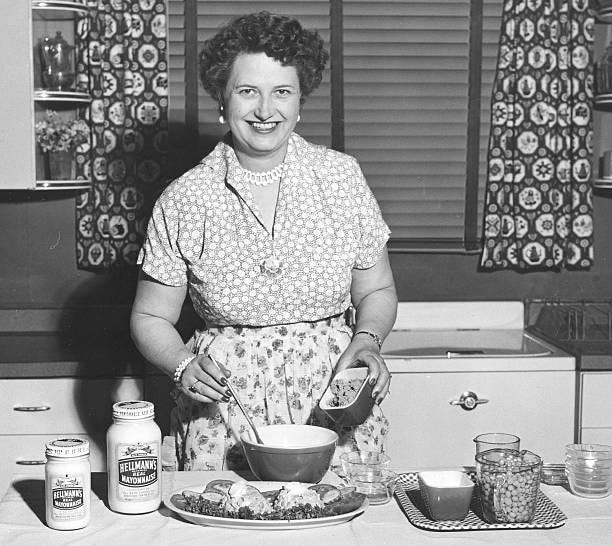
Back when mayonnaise was homemade and not store-bought, vegetable oil was known as "mayonnaise oil.” And clever cooks figured out how to make a cost-cutting cake called "Mayonnaise Cake."
In 1927 newspaper columnist Martha Lee comments on the new modern table - lace doilies easier and less expensive to care for than heavy table linens of old. And Lee shares a new recipe she calls a Mayonnaise Cake. After you combine dates, nuts, sugar, flour, spices and a little grated chocolate you whip together an egg and a half cup oil and pour this over the date and nut mixture, then bake.
Ten years later, store-bought mayonnaise is added to that cake batter. A reader shares a Mayonnaise Cake recipe in a Greeley, CO, newspaper contest, and it calls for 3/4 cup mayonnaise. By World War II rationing years, when cooks who had grown up during the Depression years knew instinctively how to make do and cut back, that cake would surface again.
Mayonnaise manufacturers made good use of the ingredient's surprise entrance into cake baking. Hellman's Chocolate Mayonnaise Cake made with cocoa had a cult following for generations.
Aioli is also mayonnaise and how to fix a broken mayo
Never fear if your homemade mayo separates while you are making it. Pull out a clean bowl, and slide an egg yolk or a dab of Dijon mustard into it. Then bit by bit, whisk in your separated mayonnaise, and as you whisk it will pull back together.
Raw eggs are a touchy subject. If you are squeamish about them, there are pasteurized eggs, such as Eggland’s on the grocery shelf. Or pasteurize your eggs yourself by placing them in 140-degree water for 3 minutes. Let them cool, then proceed with the recipe.
Do you love mayo or hate it? What’s your favorite brand? Duke’s, Hellman’s, Homemade? Or are you a mustard person?
In fact, mayonnaise is the bedrock of many of our favorite sauces:
Mayonnaise Chantilly. Whip 1/4 cup heavy cream and fold it into 1 cup mayonnaise and serve with steamed asparagus or atop gelatin salads. So good!
Sauce Remoulade. Add Dijon mustard, capers, chopped dill pickles, fresh parsley and tarragon, and a dab of anchovy paste to mayonnaise. Serve with eggs and fish.
Pesto Mayonnaise. Stir 2 tablespoons pesto into 1 cup mayonnaise.
Aioli. It’s just garlic mayonnaise! Add from 2 to 6 pressed cloves of garlic. Use half olive oil and half neutral oil such as canola or avocado.
And lastly, if you want everyone to think you’ve made homemade mayo but don’t have the time or inclination…THE ULTIMATE CHEAT!
Combine 1 cup Duke’s or your favorite store-bought mayonnaise with 2 tablespoons olive oil, 1 tablespoon fresh lemon juice, and 1/4 teaspoon paprika. Spread onto tomato and cucumber sandwiches or your favorite way to use the triumphant sauce of summer!
- xo, Anne
Coming Thursday for Paid Subscribers
Test a recipe along with me for my next book. We’ll make angel biscuits, which are those wonderful soft and yeasty biscuits, a cross between a roll and a biscuit and so good with a sliver of ham tucked inside. To receive the email with recipe and start baking, choose paid when you subscribe!
THE RECIPES:
Food Processor Homemade Mayonnaise
For tomato sandwiches, to spoon on top of grilled salmon, spread onto BLT’s and fold into Pimento Cheese, you cannot top homemade mayo. And it’s a personal thing because some of us have grown accustomed to mayonnaise a little sweet because we’ve been raised on the commercial stuff. If that’s the case, add a pinch of sugar. And some folks like to make mayo with olive oil, which I think makes it bitter, but a little olive oil, just to flavor it, is nice. So suit yourself! Neutral oils are those that have no flavor to them.
1 large egg
1 teaspoon Dijon mustard
Salt and freshly ground black pepper
1 tablespoon lemon juice or white wine vinegar
Pinch cayenne pepper, if desired
3/4 to 1 cup neutral oil, like avocado, grapeseed, sunflower, or safflower or a mix of half neutral oil and half olive oil
Wash the egg before making mayonnaise because many people believe if any bacteria are on the egg, they are on the shell. Pat dry, then crack and separate, discarding the white.
To the egg yolk, add the mustard, salt, pepper and lemon juice or vinegar, and cayenne if you like, in the container of a food processor and turn the machine on. While it's running, add the oil in a slow, steady drip of a stream. If your processor has a small hole in the pusher in the top, it’s perfect for making mayonnaise. Otherwise, you just need to be careful to dribble in the oil very slowly until it comes together. Some people add a teaspoon of water to the egg yolk to make it more receptive to the oil and help the process.
Once the mayonnaise thickens from just 2 tablespoons of the oil, you can add the oil a bit faster. Stop at 3/4 cup oil if that is the consistency you like or add the full cup. Taste and adjust seasoning if needed.




